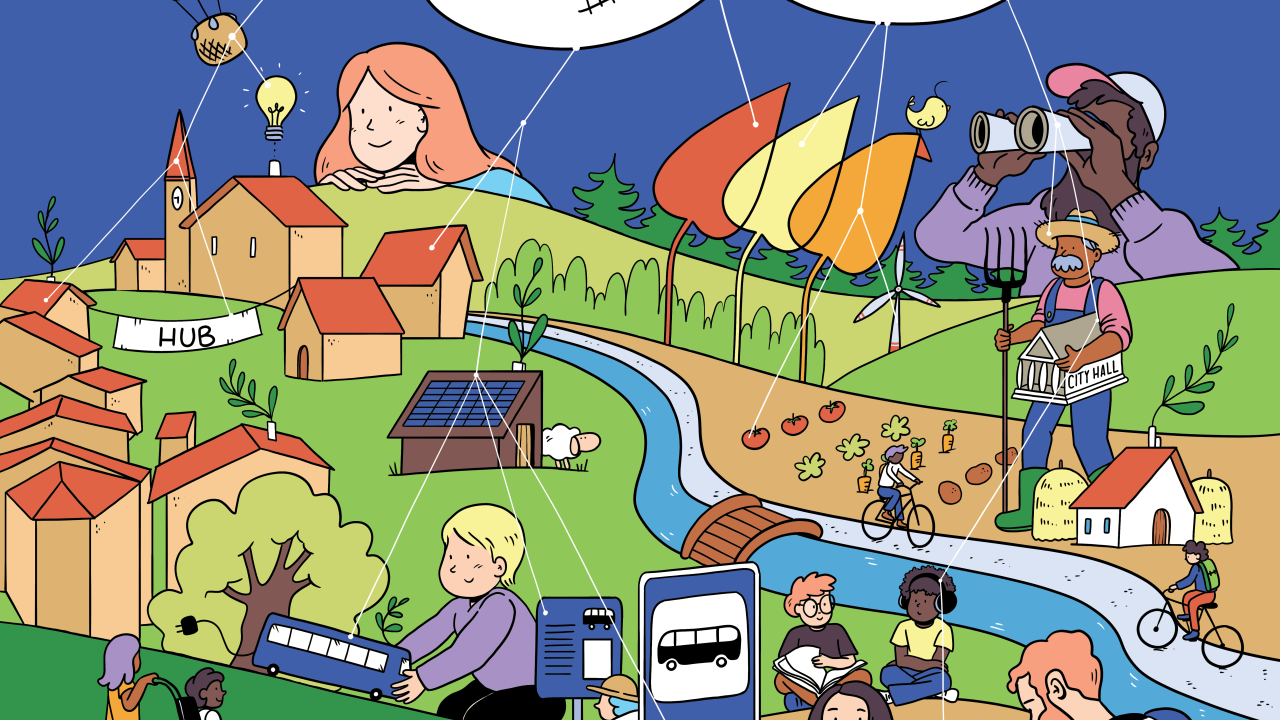European cities and regions are undergoing major transformation. An ongoing urban crisis of climate change, demographic change and population loss in rural areas, but also opportunities of rapid digitalisation are reshaping urban and rural areas profoundly. In light of these developments, the cities and regions involved in URBACT ECONNECTING Action Planning Network concluded the planning cycle with the final conference held in Faenza/Italy on the 16th and 17th of September 2025.
The mobility ECONNECTING network elaborated the ‘ECONNECTING Manifesto” in an joint effort that calls for joint, long-term solutions that build on cooperation across the urban-rural spectrum. In this context, urban-rural linkages are central to forward-looking regional (mobility) development. Both the New Leipzig Charter and the EU Territorial Agenda 2030 emphasize the importance of strengthening connections between cities, towns, and the villages through integrated, place-based, and multilevel governance approaches.
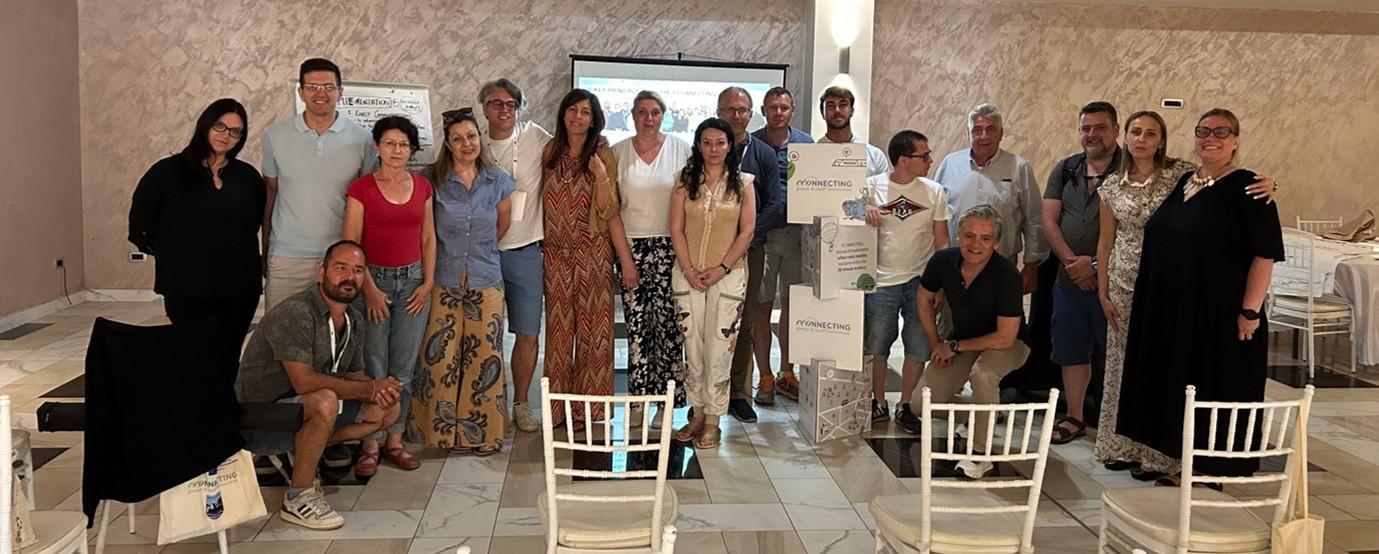
Mutual support, innovation, and a shared identity between urban and rural areas can be enhanced through strategic, equitable cooperation that prioritizes urban-rural linkages, making both cities and their surrounding regions more resilient and future-proof. This policy framework underlines that inclusive and sustainable regional development depends on coordinated planning between the urban and surrounding rural territories, ensuring that all places can realize their unique potential.
Now, we want to make the 30-Minute-Territories a reality!
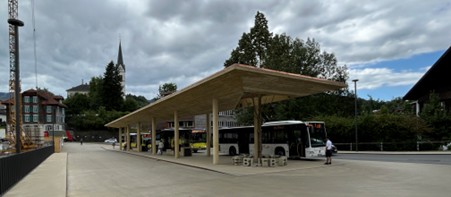
The ECONNECTING Vision to make the Proximity Territories work!
To guide this development approach, the URBACT ECONNECTING network has developed four thematic pillars for integrated urban-rural development:
- 30-Minute Territories as a vision for proximity and sustainable mobility;
- Green Communities that regenerate environments and social life;
- Accessible and Welcoming Cities that serve all generations and backgrounds;
- and Good Governance, rooted in participation, transparency, and cooperation across sectors and levels.
In order to develop thriving villages and regional hubs, we must take a coordinated, people-centred approach to territorial development. Strategic regional planning lays the groundwork for polycentric, sustainable regional development by promoting compact, well-connected settlements that encourage proximity and reduce urban sprawl.
A modern, inclusive mobility system links people to opportunities via flexible, multimodal networks, making everyday journeys, especially those to and from remote areas, easier and more climate friendly. Striving for vibrant town centres across the region brings essential services closer to people, strengthens local identity and enables all generations to thrive locally.
Expanding digital infrastructure and services ensures equitable access to information, opportunities and participation, thereby bridging the urban-rural divide. Strong decision-making partnerships engage citizens and institutions in shaping their futures, empowering local voices and building governance models that are based on cooperation and trust. Tapping into local economic potential by supporting local businesses, welcoming newcomers, and aligning investments with regional needs ensures that economic development is tailored to local requirements.
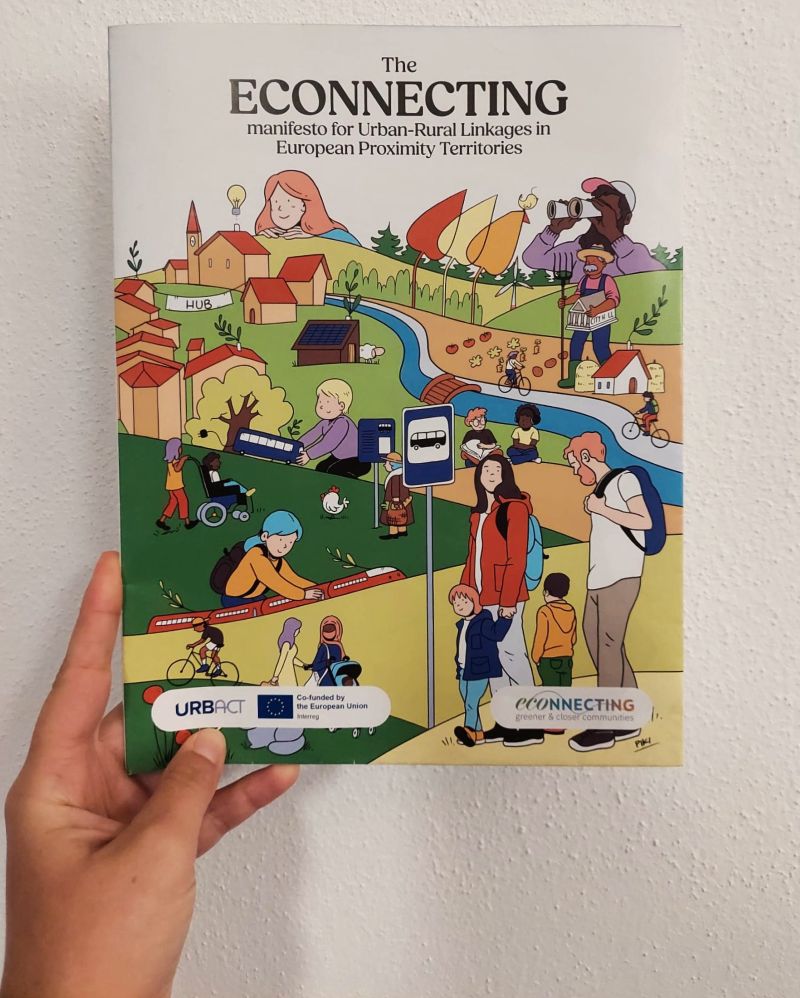
The ECONNECTING manifesto is a call to municipalities, regions and communities to connect territories, and shape resilient rural futures. We offer ways of action guided by six principals that inspire cooperation, political support, and long-term commitment. It is a reminder that change begins locally—with people and places—and grows stronger through regional and national collaboration, guided by sustainable mobility planning and mobility shift that leads to more a sustainable zero carbon regional development. Based on the econnecting network's sustainable mobility solutions and urban regeneration actions that are following the Integrated Action Plans (IAP), the manifesto outlines six key principles for thriving villages and regional hubs with strong urban-rural linkages.
1. Modern and Inclusive Mobility as a Backbone of Territorial Cohesion
A smart regional transport network is key for future-proof, 30-minute territories. To replace outdated, car-dependent systems, mobility must be flexible, intermodal, and accessible. Outlying settlements should act as mobility hubs linking public transport with services like Demand Response Transport (DRT) like the Ir e Vir from our partner Comunidade Intermunicipal da Região de Viseu Dão Lafões, car and bike sharing, and community taxis. Digital tools—unified ticketing, real-time info—make mobility more inclusive. Safe cycle and pedestrian paths support active mobility. Behaviour change is vital, supported by awareness campaigns and gender- and disability-sensitive design. Affordable, reliable public transport, electric buses, and e-bike charging help meet climate goals. Amenities for cyclists further enhance sustainable mobility.
2. Intact Centres as Catalysts for Liveable Villages, Towns and Cities
Community hubs are vital for vibrant villages and town centres, especially in areas facing demographic and infrastructure challenges. They bring services closer to residents, reduce car use, and support daily needs within walking or cycling distance. As multi-purpose spaces, they can include co-working areas, libraries, cultural venues, and spaces for all age groups to foster inclusion and intergenerational exchange. Reusing historic or underused buildings for community purposes preserves heritage and activates town centres. More housing, walkable design, local business support, e-mobility infrastructure, and renewable energy use help create lively, connected, and climate-friendly communities.
3. Strategic Regional Planning for Compact and Polycentric Development
Strategic regional planning is key to addressing population loss and the climate crisis. It must focus on compact, polycentric development, reduce sprawl, respect settlement borders, and strengthen urban-rural linkages. Transit-Oriented Development (TOD) provides a framework, integrating living, working, and leisure with public transport. Rural areas must be connected to urban networks, with mobility and community hubs supporting 30-minute territories. TOD principles should guide regional plans, limiting growth to existing settlements, protecting open land, and enabling local services. Circular economy, mixed-use development, biodiversity, and energy communities strengthen resilience. Planning must be long-term, place-based, and rooted in local identity.
4. Digital Connectivity as a Key to Inclusive Regions
Digital transformation can bridge the urban-rural divide by connecting remote areas through strong digital infrastructure. Fast, reliable internet is essential for equal access to work, education, and services. Remote work and digital public services, like e-government and telemedicine, make rural areas more attractive and resilient. In mobility, app-based ticketing, real-time info, and on-demand services improve accessibility and promote sustainable transport. Tools like digital twins and data analysis support smarter planning. Community hubs can offer digital access and training for all, like the DigiClare Digital Hubs at the Ennis Municipal District in Ireland, ensuring no one is left behind. Digitalisation must support inclusion, cohesion, and long-term regional resilience.
5. Resources and Needs as Drivers of Local Economic Development
Strengthening local economies means supporting local businesses and creating attractive conditions for residents. Incentives like welcome packages or start-up incubators boost vitality, while jobs and integration support for immigrants help address labour shortages. Local Economic Development should reflect local needs and use local resources sustainably, keeping value in the community. New jobs should focus on sustainable sectors such as active mobility, local tourism, and healthy lifestyles. Rural hubs can become economic engines through tourism and culture, as we have experienced in the municipalities like Riolo Terme in Unione Romagna Faentina, Italy. Projects must combat population loss and build long-term economic strategies building on mobility plans, but also innovation and local identity. Agreements with local businesses, eg. within the “Bike-to-Work” program in Faenza improve smart and active mobility to access the working-places.
6. Strengthening Decision-Making and Governance Structures Through New Regional Partnerships
Good governance builds on bottom-up local groups of NGOs, NPOs, residents, and municipalities, ensuring transparent, responsive collaboration adapted to local contexts. Participation means co-creation, not just consultation, with tools like town hall meetings, (online) surveys, mapping, Critical Mass Bike Rides, participatory budgets, open calls, or creative formats involving youth and the elderly. Context-sensitive communication will avoid one-size-fits-all, addressing specific challenges and potentials for all gender groups. Inclusive processes—engaging children, elderly, and diverse groups—strengthen trust, legitimacy, and capacity. Co-creation with civic groups and citizens including innovative formats like „reverse consultation"—where public services actively seek out citizens—makes governance more inclusive and dynamic. Above all, governance must move beyond short-term politics toward long-term visions and policies for sustainable local and regional development.
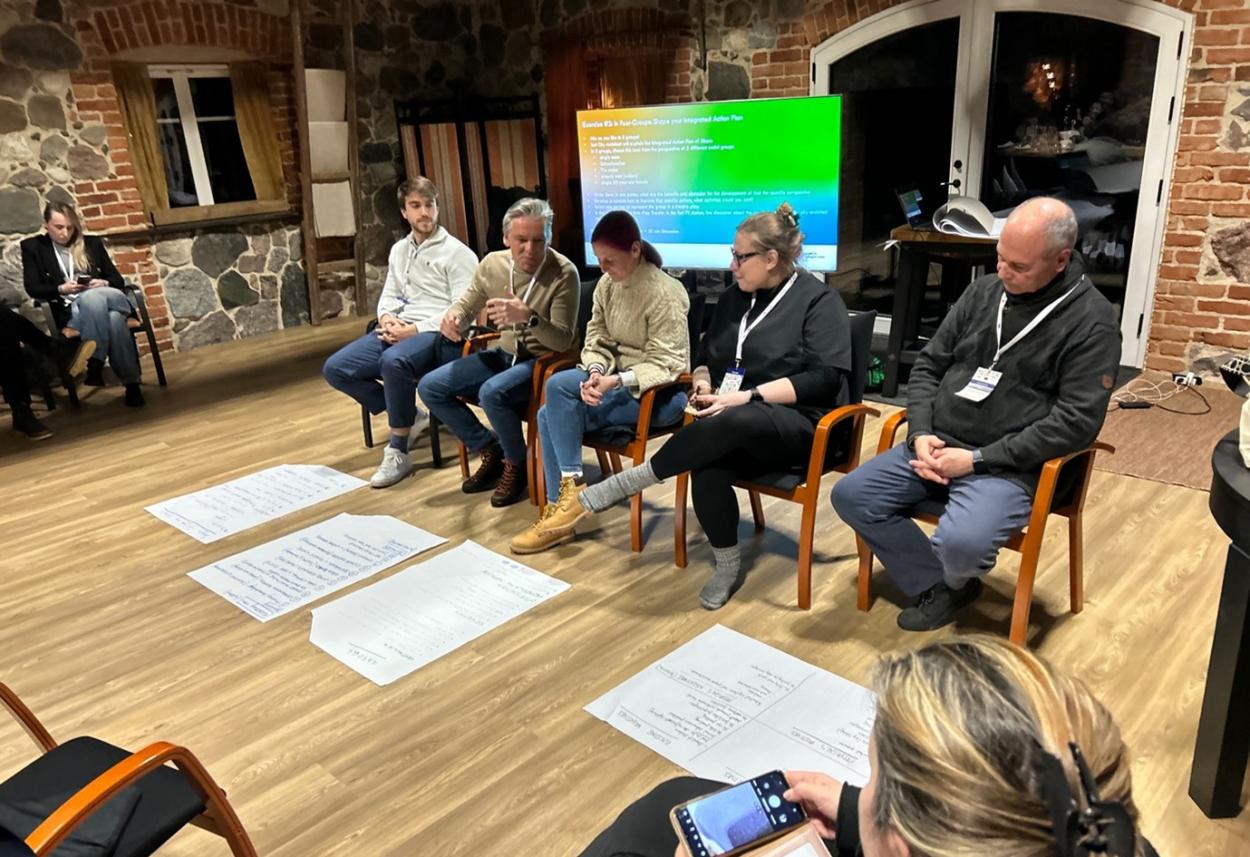
Let’s make it work – spread the Manifesto throughout Europe!
The manifesto addresses municipalities, regional authorities, technical departments, planners, social and mobility experts working toward sustainable, inclusive urban mobility strategies. Community leaders, young citizens, businesses, and social services are equally crucial, contributing innovation and lived experience. Regional and national authorities—government bodies, infrastructure agencies, and funding institutions—ensure long-term coordination. International partners like URBACT the mobility networks like S.M.ALL, PUMA, SCHOOLHOODs, Beyond the Urban and FEMACT-Cities as well as all other past and future mobility networks, and National URBACT Points (NUP) support knowledge exchange and cooperation.
We also call on changemakers across all levels: EU programs (Interreg, LEADER), private investors, and community funders. Politicians, from local councils to the European Parliament, can anchor these goals in policy. Schools, heritage groups, and community organisations sustain local ownership. Lastly, NGOs, academics, and European institutions like the URBACT Secretariat and European Commission drive advocacy, research, and systemic change.
Towards a more sustainable urban mobility! Towards better connected urban areas!
Further Reading: Download the ECONNECTING Manifesto

